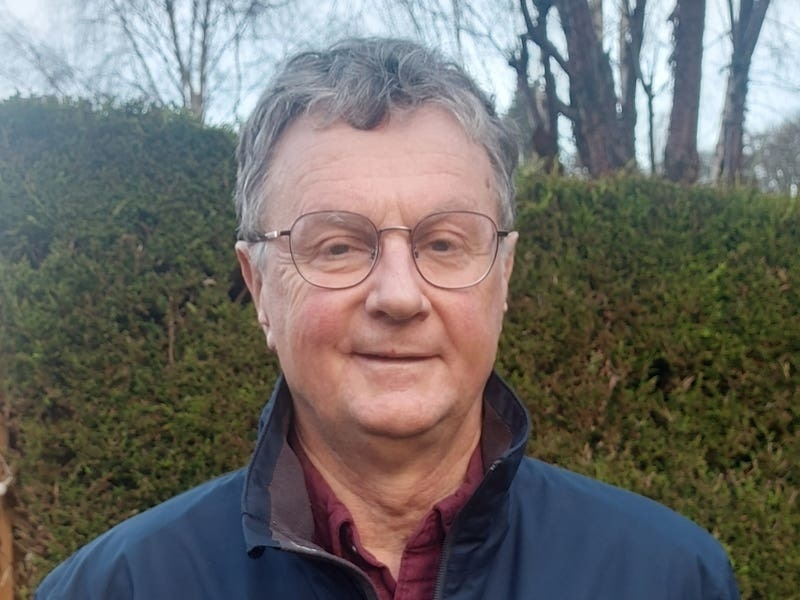By Mick Le Moignan
Imagine a huge, multinational corporation developed indestructible, carcinogenic chemicals and used them in so many products that they would be found in the blood of 98% of the global population, as well as every ocean, most land masses, rivers, animals and plants. How could the company ever compensate its victims or restore the environment?
Sadly, this is not a ludicrous, sci–fi, dystopian fantasy, but the plain truth. PFOS and PFAS, – per- and polyfluoroalkyl substances – developed and produced by the US conglomerate 3M, have unique properties that enable them to resist heat, water, oil and grease. They are found in non-stick frying pans, waterproof and stain-resistant clothing, sofas and carpets in almost every home in the world. They are in school uniforms, adhesives and food packaging. Having been used in some fire-resistant foams, they have flooded vast areas and flowed down creeks and rivers to the sea.
As the culmination of almost a decade of detailed, investigative research in the US and Australia by Carrie Fellner, a journalist with The Sydney Morning Herald, a powerful, new, 90-minute documentary, How to Poison a Planet, shows that PFAS are responsible for worldwide contamination, disease and death. 3M and the Australian Defence Department stand accused of wilfully ignoring the mounting evidence over several decades.
In March, 3M settled a class action “on the steps of the court”, paying out US$12.5 billion to avoid a five-week hearing that would have revealed the whole, terrible story. This will be just the first of many claims resulting from the widespread damage done by PFAS. Already banned in many countries, 3M will cease production next year, but 11 other US companies will continue. The genie is out of the bottle. Nobody knows how to remove these indestructible agents of death and disease from the environment.
Comparisons with the scourge of tobacco or asbestos are inadequate, because smokers had a choice and asbestos can be removed. Most of us have ingested about 30 times the “safe” limit of PFAS without knowing anything about them. They are called “forever chemicals” because they never break down: they will remain indefinitely in water and soil – and in our bodies and our everyday possessions.
They are found in coffee cups, dental floss, make-up, shaving cream, contact lenses, paint, tampons, toilet paper, tinned tuna and eggs. They are in your bedding, cars, curtains and clothes. They help to keep the screen of your smart phone free from fingermarks. No need to lick your fingers: they can be absorbed through skin or in the air you breathe.
The first alarm was raised in 1999 by a West Virginian farmer who lost 190 cows to rare diseases. He lived next to a DuPont chemical plant which manufactured Teflon with materials from 3M. Environmental lawyer Robert Bilott took up the case, which settled out of court in 2001. The story is told in the film Dark Waters, starring Mark Ruffalo as Mr Bilott.
It is rare for a journalist to have the freedom to spend years working on a single subject. Sydney’s flagship newspaper allowed Ms Fellner the time she needed to investigate this appalling story thoroughly. At a premiere screening of How to Poison a Planet, Herald editor Bevan Shields said “she embodies what’s best about the paper”.
In 2018, she reported on 21 cancer cases among children at a school in Minnesota, next to 3M’s headquarters. The town’s drinking water was severely contaminated with high levels of forever chemicals. Six of the victims had brain tumours.
Back home in Australia, Ms Fellner investigated PFAS contamination at the Williamstown RAAF airbase, near Newcastle, New South Wales, caused by firefighting foam. Then, documentary director Katrina McGowan invited her to examine the plight of an Aboriginal community in Wreck Bay, near the naval base at Jervis Bay in southern NSW.
Even after the ravages of 200 years of white settlement, Indigenous people here enjoyed an idyllic life on unspoilt beaches near a tourist paradise, fishing, eating local oysters and bathing where their children played, in the creeks that flowed down to the sea through their land.
Sadly for them, at the Department of Defence base on higher ground, servicemen practised fighting bushfires with airborne foam. Firefighters were regularly drenched in the foam and, when it flowed away, so were the children playing below.
PFAS exacerbate heart and lung conditions, inhibit the immune system, raise cholesterol and contribute to many other illnesses, as well as cancer. There have been too many unexplained, early deaths in the community for coincidence or misfortune.
In the film, Ms Fellner and Ms McGowan tell of two sisters, Skye and Jade Sturgeon, who grew up playing in what they thought was harmless foam, floating in the creek. In her late teens, Skye’s persistent headaches and problems with balance were diagnosed as meningioma, a rare brain cancer. Typically, this condition strikes people aged between 40 and 70. The chances of Skye getting the disease were reckoned to be 1.5 in a million.
At 18, she had successful brain surgery, but the “benign” tumour grew back in time to spoil her 21st birthday and she had another operation and another exhausting convalescence. Then her sister Jade was diagnosed with the same condition.
Ms Fellner wrote: “Doctors have been searching for a hereditary link that could explain the sisters’ misfortune, but genetic testing has so far drawn a blank.”
The most sinister aspect of the whole story is the evidence that both 3M and the Department of Defence seem to have known about the problem for decades.
As long ago as 1979, 3M’s top executives flew from Minnesota to California to consult world-leading scientists about the dangers of PFOA. The experts’ alarming advice was deleted from the final report but was later unearthed in an earlier draft by lawyers’ subpoenas.
Ms Fellner found an equally damning letter in Australia, showing concerned enquiries sent by the Defence Department to 3M in 1985. Nobody warned the community in Wreck Bay that their food and water were contaminated for almost another 40 years.
Human life won’t last forever – but these once–profitable chemicals will.






